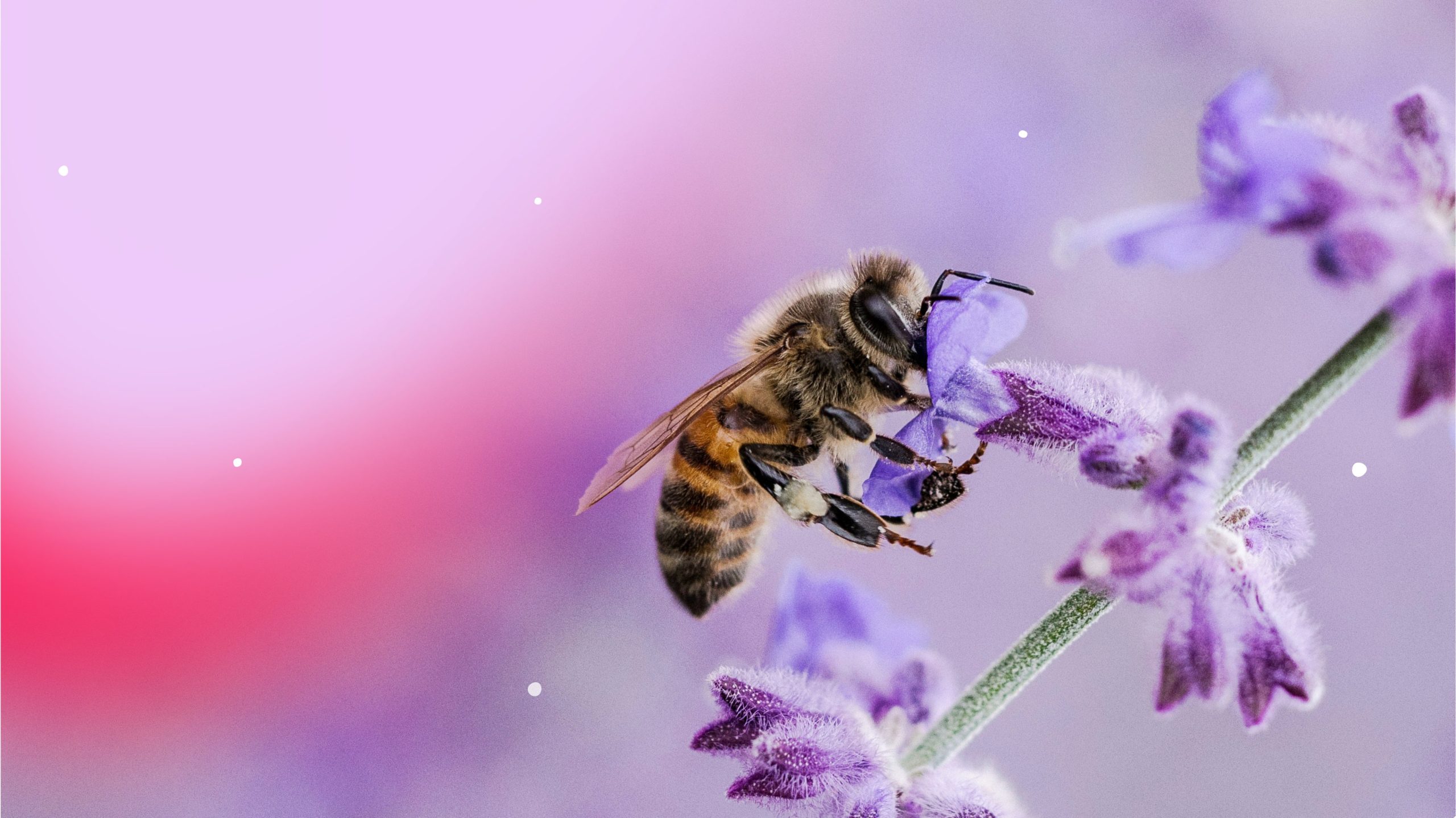In the face of climate change and biodiversity loss, nature and farm restoration projects have become essential strategies to heal degraded landscapes, sequester carbon, and support a wide array of plant and animal species. One powerful ally in these efforts is the honey bee (Apis mellifera). Known for their remarkable pollination abilities, honey bees can increase plant growth and biodiversity, ultimately supporting greater carbon capture. But the advantages of honey bees go beyond pollination alone; by leveraging data from honey bee activity, restoration projects can monitor and improve conditions for all pollinators, amplifying local pollination and carbon sequestration.
Here, we explore how integrating honey bees into restoration projects can foster both biodiversity and carbon capture, and how taking deliberate steps to counter potential drawbacks ensures a balanced, thriving ecosystem.
1. The pollination effect: Honey bees as catalysts for carbon capture and biodiversity
Pollinators are vital for healthy ecosystems, as they support the reproduction of flowering plants, which make up a substantial portion of the earth’s biomass and contribute significantly to carbon sequestration. Honey bees, among the most efficient pollinators, can amplify these benefits by enhancing plant reproduction and growth in restoration areas.
When introduced into degraded or recovering landscapes, honey bees can drive increased pollination, leading to:
- Higher plant diversity: By aiding the growth of a wide range of plant species, honey bees promote plant diversity, which in turn creates a more resilient ecosystem. Diverse plant life supports healthier soil structures, which store more carbon and retain nutrients.
- Increased biomass and root depth: Enhanced pollination means greater seed production, leading to denser and more robust plant populations. These plants contribute more organic material to the soil through leaf litter and root systems, furthering carbon storage.
- Soil enrichment through natural fertilization: Honey bees not only pollinate but also contribute to soil health directly. With thousands of bees per hive, their waste (bee “feces”) and naturally occurring bee bodies add valuable organic nutrients to the soil, enriching it over time. This continuous cycle offers a powerful fertilization boost for the ecosystem.
- Attracting wildlife and enhancing food chains: Natural bee loss attracts birds and small animals, which feed on them and leave behind organic material that further fertilizes the soil. This balanced cycle supports a thriving ecosystem, enriching the soil and strengthening the local food web.
As honey bees pollinate diverse wild and cultivated plants, they set off a cascade of benefits, enhancing biodiversity and contributing directly to carbon capture as restored plant communities develop.
2. Data-driven insights: Using honey bee activity to improve pollinator conditions
Honey bees are not only effective pollinators—they’re also excellent “data gatherers.” By tracking and analyzing honey bee activity, restoration projects can gain valuable insights into the environmental health of an area and identify conditions that impact pollinators. Using this data, project managers can make targeted improvements that benefit all pollinators, which in turn supports even more robust pollination and carbon capture. Here’s how:
- Identifying resource gaps: Data on honey bee foraging behavior reveals areas with insufficient floral resources or food diversity. Armed with this information, restoration teams can plant native wildflowers or food sources that attract and support both honey bees and native pollinators, ensuring balanced growth and reducing competition for resources.
- Tracking pollinator health: Monitoring honey bee health offers an early warning system for potential environmental threats like pesticides, habitat fragmentation, or climate stressors. Swiftly addressing these issues supports healthier, more active pollinators.
- Optimizing ecosystem management: With insights on pollinator movement patterns and plant-pollinator dynamics, restoration projects can adaptively manage areas to boost biodiversity and ecosystem resilience, ensuring long-term carbon sequestration.
3. Addressing potential drawbacks: A thoughtful approach to honey bee integration
While honey bees bring numerous benefits, their introduction into restoration projects must be handled with care to avoid adverse effects on local ecosystems, especially native pollinators. By taking specific actions, we can amplify honey bee advantages while protecting the natural balance:
- Control hive density and placement: Gradually introducing a limited number of honey bee hives prevents them from overwhelming native pollinators. Placing hives strategically, such as in areas with abundant food resources or only during peak blooming seasons, allows native species to access food sources without excessive competition.
- Support native pollinators with targeted planting: Planting native, pollinator-friendly plants and flowers ensures that resources are available for a variety of pollinators, including solitary bees, bumblebees, and butterflies. Providing nesting sites and habitat corridors exclusively for native pollinators further supports their populations.
- Minimize pesticide exposure: Maintaining pollinator health involves reducing or eliminating pesticide use within and around the project area. Using pollinator-safe practices ensures that bees of all kinds, from honey bees to native pollinators, can forage and nest safely.
Through careful management, we can foster an environment where honey bees and native pollinators coexist harmoniously, each contributing uniquely to biodiversity and ecosystem health.
Conclusion: A path forward for resilient, carbon-capturing ecosystems
Harnessing the pollination power of honey bees in nature and farm restoration projects offers a compelling strategy for amplifying biodiversity and carbon capture. By increasing plant growth and supporting diverse pollinator populations, honey bees drive the creation of resilient ecosystems that are better equipped to store carbon and support wildlife.
Moreover, by tapping into the data honey bees generate, we gain unprecedented insights into the needs and challenges of all pollinators. With adaptive management and mindful mitigation of potential drawbacks, honey bee integration can enhance pollination services across ecosystems, contributing to the restoration of our landscapes, the reduction of atmospheric carbon, and the safeguarding of our planet’s natural biodiversity.
By viewing honey bees as pollinators, data partners, and natural fertilizers, restoration projects can unlock new dimensions of ecosystem health, leading to more effective, sustainable, and biodiverse carbon sequestration strategies.



